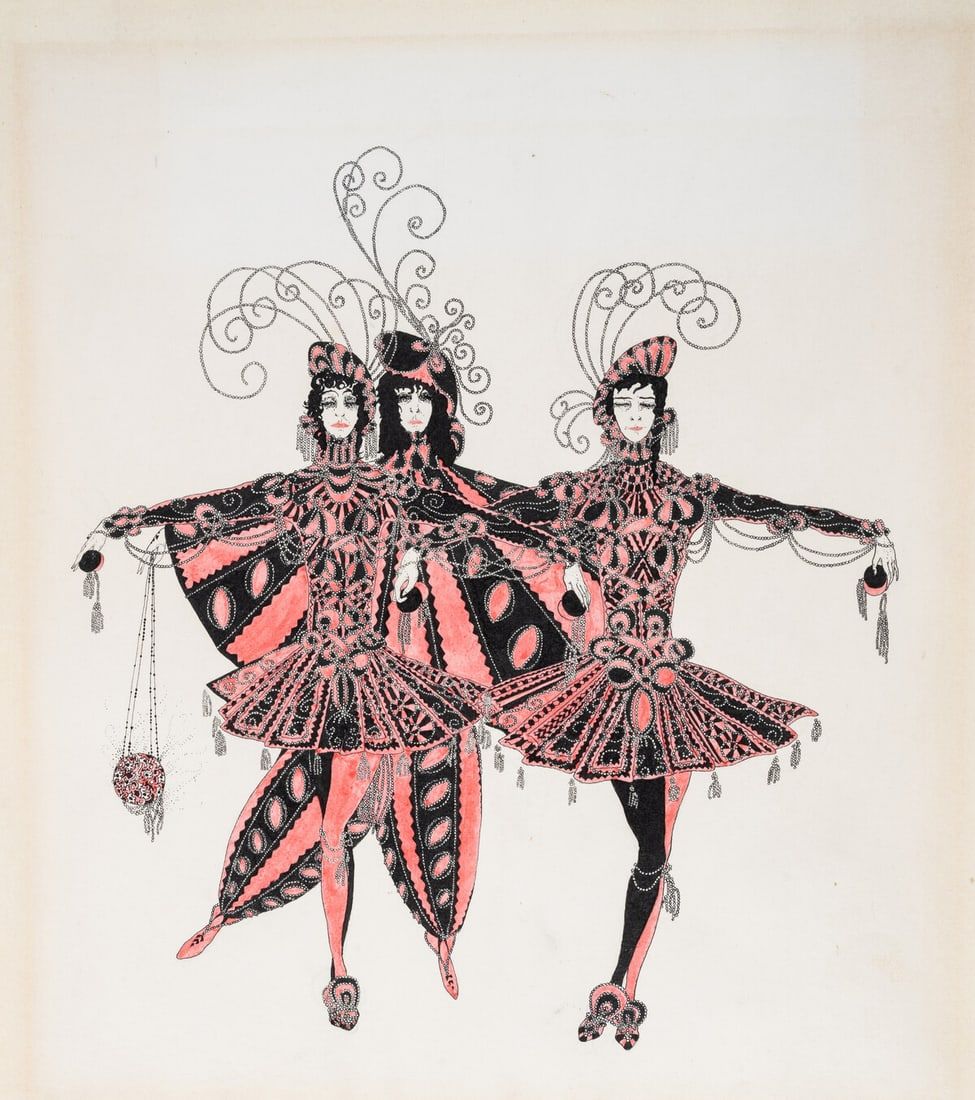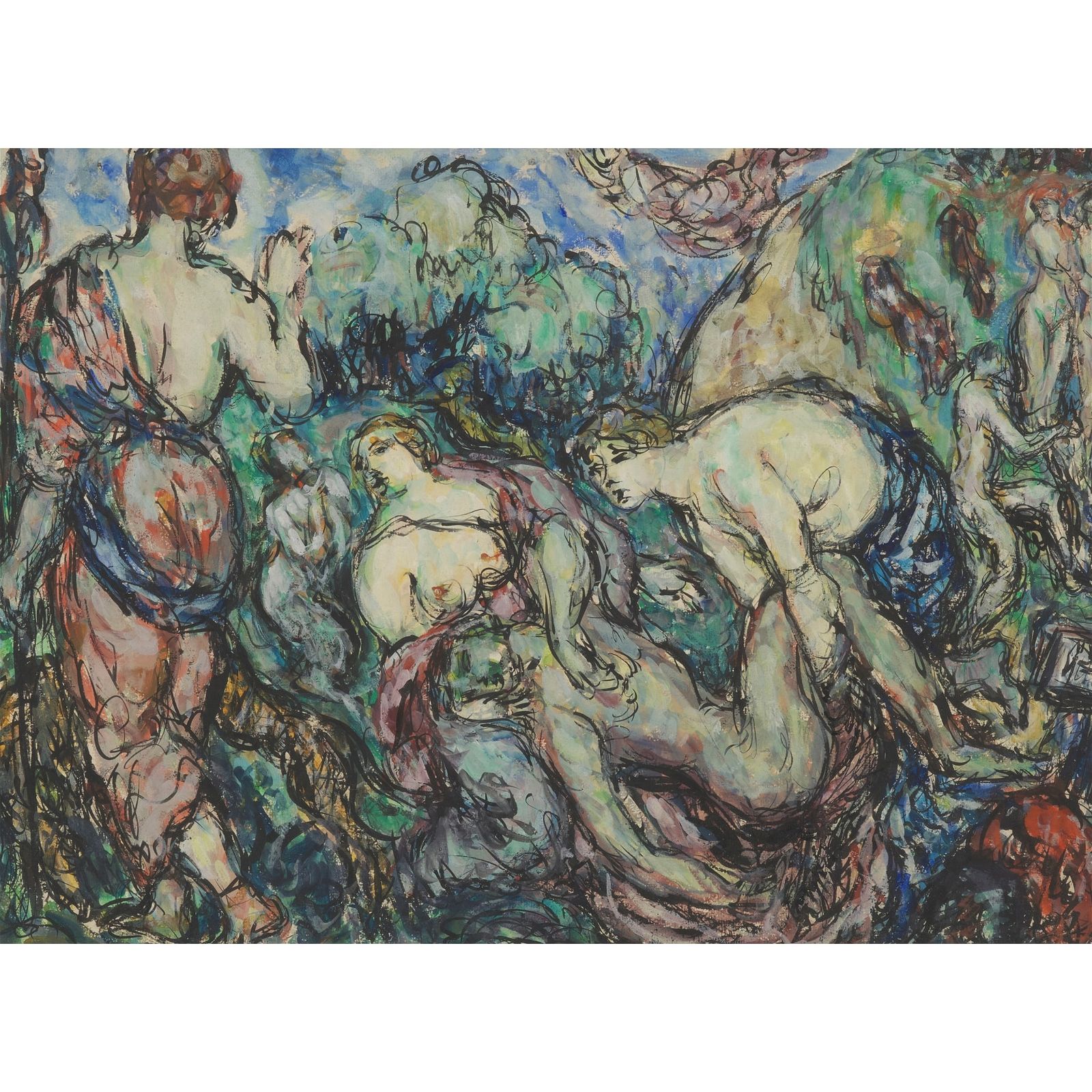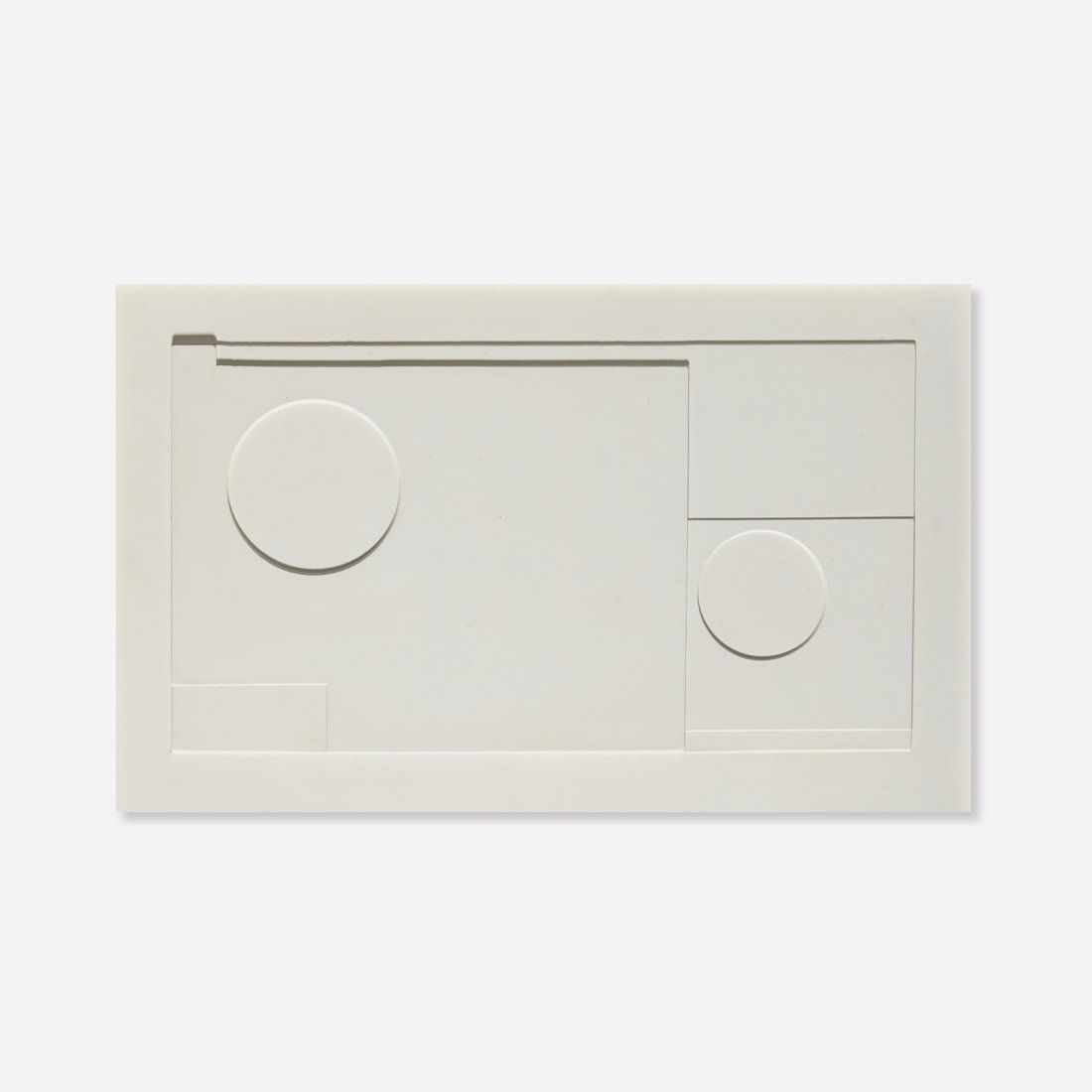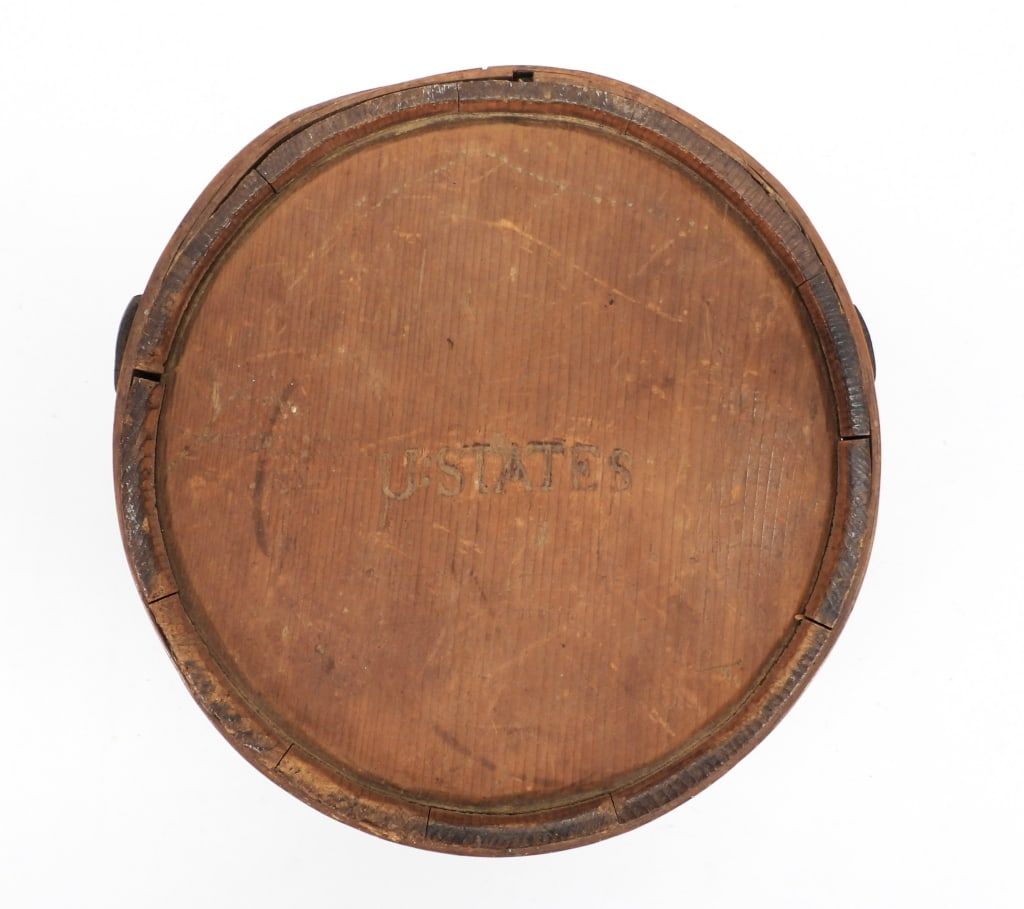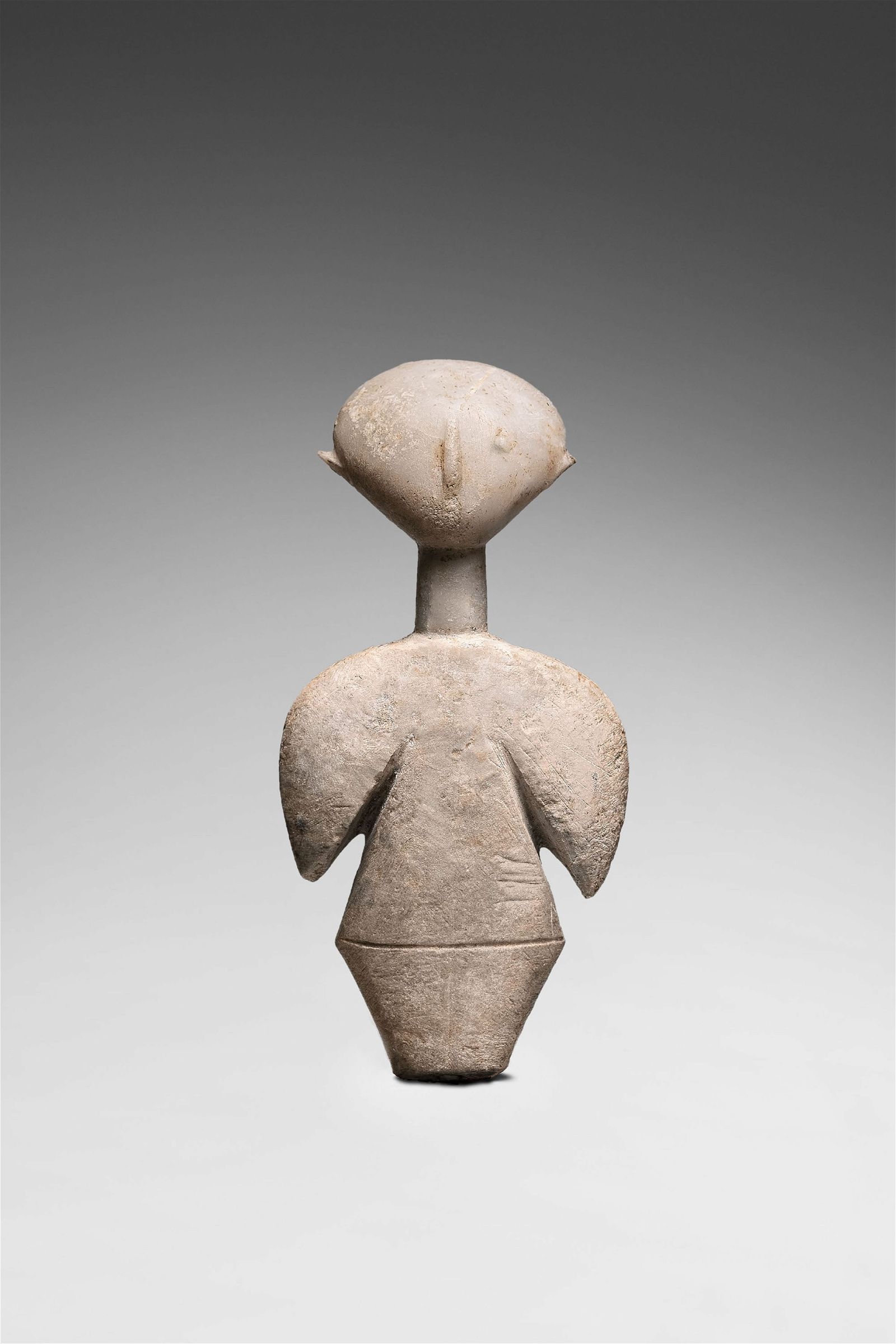Original Illustration by Alastair for Oscar Wilde Book, $11,920
LONDON – The aristocratic German artist, composer, dancer, mime, poet, singer, and translator Hans Henning Otto Harry Baron von Voigt (1887-1969) is best known by his pen name. From 1914, he went simply by the pseudonym Alastair.
Working in the decadent style pioneered by Aubrey Beardsley and other artists of his circle, Alastair’s fame spread with the 10 full-page drawings he contributed to a 1920 printing of Oscar Wilde’s The Sphinx and the illustrations for a 1922 copy of his play Salome in 1922.
The original Alastair penwork illustration offered in Forum Auctions’ February 15 sale of Modern Literature, Children’s & Illustrated Books was one he produced for the Black Sun Press’ 1928 printing of Wilde’s 1891 novel The Birthday of the Infanta. Described as ‘a scarce example of [Alastair’s] fine penwork,’ it was consigned by a private collector who had acquired it at auction in 1997. It hammered for £7,500 and sold for £9,450 ($11,920) with buyer’s premium against an estimate of £800-£1,200 ($1,010-$1,515).
Dame Ethel Walker, ‘Nymphs Finding Narcissus’, $11,550
EDINBURGH, UK – It is indicative of current market sensibilities that the work of the Scottish painter Dame Ethel Walker (1861-1951) is receiving renewed attention. Although she famously said there were “only two types of artist – bad and good,” she is seen as a pioneering figure. Not only was she the first woman member of the New English Art Club, elected in 1900, but she is now acknowledged as one of the earliest lesbian artists to explore her sexuality openly in her works. Soon after her death, she was the subject of a major retrospective at the Tate in 1951 alongside Gwen John and Frances Hodgkins.
Walker painted portraits, flower pieces, interiors, and seascapes in an attractive Impressionist style, but her most individual works are decorative compositions inspired by her vision of a Golden Age and the influence of French Symbolist painting. A good example was Nymphs Finding Narcissus, a 15 by 21in (39 by 54cm) ink and gouache from the 1920s offered as part of Lyon & Turnbull’s February 13 sale titled The Art Edit. Attracting plenty of interest at its modest estimate of £600-£800, it hammered for £7,000 and sold for £9,170 ($11,550) with buyer’s premium.
Ben Nicholson, ‘White Relief’, $14,410
CHICAGO – Ben Nicholson’s series of monochromatic three-dimensional relief paintings – created by the thick layers of white paint and carving wood – first appeared in the mid-to-late 1930s. Nicholson was heavily influenced by the geometry of Mondrian, whose studio he had visited in 1933.
Three decades later, in the late 1960s, a series of replicas of those Nicholson works were made based on an original in the Tate Gallery, London. Produced in an edition of around 50 by the West End Engraving Company, they were published at the time by the Tate. It was one of these, White Relief in painted and carved wood, that was offered by Wright in Chicago on February 1. Estimated at $2,000-$3,000, it hammered for $11,000 and sold for $14,410 with buyer’s premium.
This work is from the edition produced by the West End Engraving Company Limited, London and published by the Tate Gallery, London in the 1960s depicting the work White Relief (1935) in the collection of the Tate, London.
Revolutionary War-era Wooden Canteen Inscribed ‘U States’, $42,300
CRANSTON, R.I. – Given that the term United States of America was not recorded until 1776, when the words ‘U States’ were painted to this Revolutionary War-era staved wood canteen, it was a relative novelty. The pattern is one used by the Continental Army from circa 1777. Similar examples are pictured in Rex Kessler’s 2021 book Continental Arsenal Marks and Stamps, Continental Ownership of Arms and Accoutrements 1776-1798.
The canteen came for sale by family descent at Bruneau & Co. on February 8 with an estimate of $5,000-$10,000, hammering for $36,000 and selling for $42,300. An old paper label to the back is inscribed ‘Canteen used by William Fleming of Lower Oxford township, Ches. Co, Pa In the war of 1812.’ There is a Thomas Fleming who appears in the 4th Pennsylvania Battalion in 1776, as well as other units later in the war. Other soldiers of that name are associated with the War of 1812.
Prehistoric Kilia-type ‘Stargazer’ Figure, $216,940
BRUSSELS, Belgium – Highly stylized nude female idols were made throughout the Aegean basin during the prehistoric period. This particular figure, carved from translucent white marble, is of the Kilia type, named after the village in northwest Turkey, formerly ancient Anatolia, where the first examples were found. Although they show similarities with the figures produced in the Cyclades – both were probably linked with fertility and the life cycle – they are considerably earlier, dating to around 4500-3500 BC. They are often given the colloquial title of ‘stargazers’ as the heads give the impression of an upward stare.
Only around 15 such idols survive in near-complete form, although fragments are more numerous. Most examples were broken across the neck, suggesting that the sculptures were ritually ‘killed’ at the time of burial. The most famous of these figures is the so-called Guennol Stargazer from the Chalcolithic Period (circa 3000-2200 BC) that was sold for $12.5 million at Christie’s New York in 2017. Although in the U.S. before 1966, it was subsequently the subject of an ownership claim by the Turkish state.
The example offered by Native Auctions in Brussels on January 30 stood just shy of 5in (12cm) high and had a provenance to a German collection formed in the 1960s-80s. Estimated at €80,000-€120,000, it hammered for €155,000 and sold for €201,500 ($216,940) with buyer’s premium.


